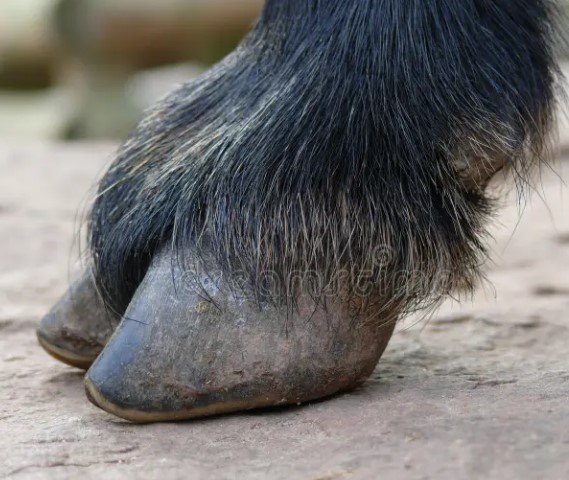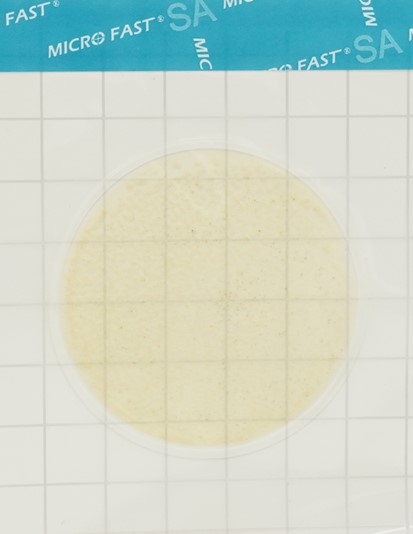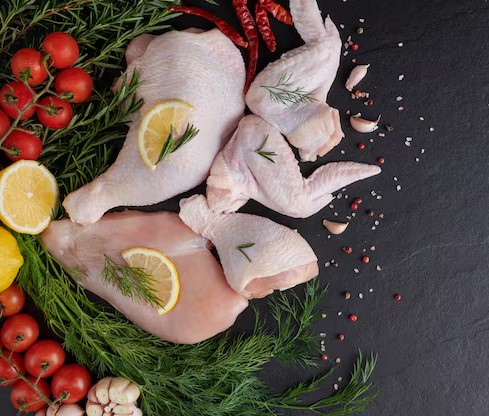Arthritis in cattle

Arthritis in animals in veterinary medicine includes a group of diseases that affect the joints . Most often, arthritis is inflammatory; the aseptic form of this disease is less common. In cattle , during inflammation, mainly the synovial membrane of the joint capsule suffers, which is why the cows begin to noticeably limp. In the absence of timely treatment, lameness can become chronic, and inflammation can affect other tissues and result in severe complications.
How does bovine arthritis appear?
The inflammatory process in the joints is provoked by infection. The bacteria cause severe suppuration, which causes the limb to lose function. The cause of purulent arthritis is often injury (bruise, sprain, dislocation) or infection in the joint from neighboring tissues due to osteomyelitis, abscess. In cows, arthritis occurs due to mastitis, a postpartum infection. In calves - with rickets.
Dystrophic processes in the joints, which can also cause disease, most often develop in cows kept in stalls, when the animals move little. Aseptic arthritis mainly occurs against the background of rheumatism. A lack of vitamins and minerals in the diet and metabolic disorders have a negative impact.
Diagnosis and symptoms
The disease is diagnosed based on:
-
inspection and palpation;
-
X-ray examinations;
-
arthropuncture with laboratory bacteriological examination of the fluid contained in the joint.
The disease almost always occurs acutely: individuals quickly lose productivity and weight, become depressed, move little and refuse food. The following signs indicate a problem:
-
the animal is lame, and the degree of lameness progresses;
-
tissues in the joint area increase in volume;
-
become painful on palpation;
-
a large amount of exudate forms in the joint;
-
a disease caused by rheumatism, accompanied by a change in the shape of one or more joints;
-
with purulent arthritis, the temperature of cows rises;
-
the formation of abscesses and fistulas with pus escaping is possible.
Difference from arthrosis
This pathology is often confused with arthrosis, which is non-infectious. The difference is that arthritis occurs in an acute form, while arthrosis occurs in a chronic form. Arthrosis deformation of the joints is accompanied by loss of elasticity, dryness, and cracking. While arthritis is characterized by the release of a large amount of exudate.
Prevention
To avoid problems, make sure your animals are getting enough vitamins and minerals. In summer, individuals should spend more time in the fresh air; during winter stays, ultraviolet lighting should be provided. it is important to comply with sanitary and hygienic standards. This is especially true for the postpartum period in cows.
Treatment of arthritis in cattle
We recommend using one of the NITA-FARM preparations. All of them have proven highly effective in veterinary practice.
-
"Nitox 200". The newest drug based on oxytetracycline for quickly combating infection in purulent arthritis. The treatment consists of just one intramuscular injection.
-
"Nitox forte" Oxytetracycline is enhanced with flunixin, thereby achieving a persistent antibacterial effect that lasts up to 5 days.
-
"Doxilox." One injection of this latest generation antibiotic is enough to rid an individual of the infection that caused the disease.
-
"Azitronite". Another effective antibiotic (based on azithromycin) to fight infections in soft tissues and joints. Typically, the course of treatment consists of two injections.
-
Lexoflon. We recommend this antibiotic based on levofloxacin for the treatment of infectious arthritis that is diagnosed in cows after birth. The drug is administered once a day for 3–5 days.
-
"Flunex". The drug belongs to NSAIDs; it effectively complements antibiotic therapy, as it quickly relieves inflammation and pain. Individuals recover in a shorter time.
Read together with it:
- США: Обзор рынка КРС за 48 неделю от 01 декабря 2025 годаМинистерство сельского хозяйства США (USDA) сообщило о снижении оптовых цен на говядину, при этом спред между ценами на мясо категорий Chioce и Select увеличился до 15,77 доллара. Цены на говядину Choice снизились на 1,46 доллара до 366,82 доллара, а на говядину Select — на 4,46 доллара до 351,05 доллара. Общий убой крупного рогатого скота, подтвержденный федеральной проверкой Министерства сельско...
- A new take on the suckling lamb: a symbol of tenderness and sophisticationMiratorg has created a unique breed, combining the best of the Australian Dorper and the French Lacaune. This breed is known for its firm texture and creamy softness, resulting in silky MEAT with a nutty, creamy flavor. Miratorg farms operate with respect for nature, providing lambs with natural living conditions. Their products are certified according to international standards, and each batch is...
- The director of JSC Podlesye-2003 explained how they learned to withstand bad weather and reap high harvests.The team at Podlesye-2003, a joint-stock company, has learned to withstand adverse weather conditions and harvest high yields of grain, corn, and SUGAR beets, as well as produce thousands of tons of extra-grade MILK annually. We learned how they do it on a trip to the Slutsk district. Benefits for Argarians : "Of course, 2......
- The illegal movement of 174 cattle from Buryatia was prevented in the Irkutsk region.On November 15, ROSSELKHOZNADZOR officers detained 174 cattle being transported without the required veterinary documentation. Seventy-four cattle were being transported from the village of Deben in Buryatia, and 100 from the Kyakhta district. All animals were returned to their loading point. Veterinary post specialists not only inspect passing vehicles but also inform owners about veterinary legi...
- From houses to the "Sand Factory." How the Rachkovichi State Enterprise motivates workers to stay in the village.Belarus's leadership in the global dairy market is ensured by farms focusing on MILK production . This "elite club" includes the state-owned enterprise "Rachkovichi" of the Belarusian Railways in the Slutsk District of the MINSK Region. Its impressive milk yields and field yields are the result of a well-organized livestock industry, careful attention to soil fertility, the use of agricultural tec...
- A pensioner in Gomel was sentenced for murder with particular cruelty.November 18, Gomel. The Gomel Regional COURT delivered a verdict in a criminal case of murder committed with particular cruelty, BelTA learned from the court. A pensioner was charged under paragraph 6, part 2, Article 139 of the Criminal Code. The victim of his sudden aggression was a 45-year-old Gomel resident who had come to visit a friend, a summer resident, in Romanovichi. During a sudden conf...
- Аграрии Дагестана завершают осенний перегон скота и заготовку кормовЖивотноводы Дагестана перегнали на зимние пастбища более 1 млн голов скота. Для успешной зимовки заготовлено свыше 1,5 млн тонн кормов. В зоны отгонного животноводства поступило уже 998 тыс. голов мелкого рогатого скота, 41 тыс. голов крупного рогатого скота и 1613 лошадей. В пути остаются более 300 тыс. овец и коз, около 99 тыс. голов КРС и 2 тыс. лошадей. Планируется, что все они будут благополу...
- США: Обзор рынка КРС за 46 неделю от 17 ноября 2025 годаПо данным биржи, в пятницу дневные лимиты были расширены до 13,750 центов для фьючерсов на скот на откормочный скот и до 10,750 центов для живого скота. Трейдеры сообщили, что на наличных рынках Канзаса и Техаса скот торговался вяло, по $228 за центнер, что на $2-4 меньше, чем на прошлой неделе. Между тем, падение фондового рынка на минувшей неделе также вызвало опасения относительно потребительск...





























































